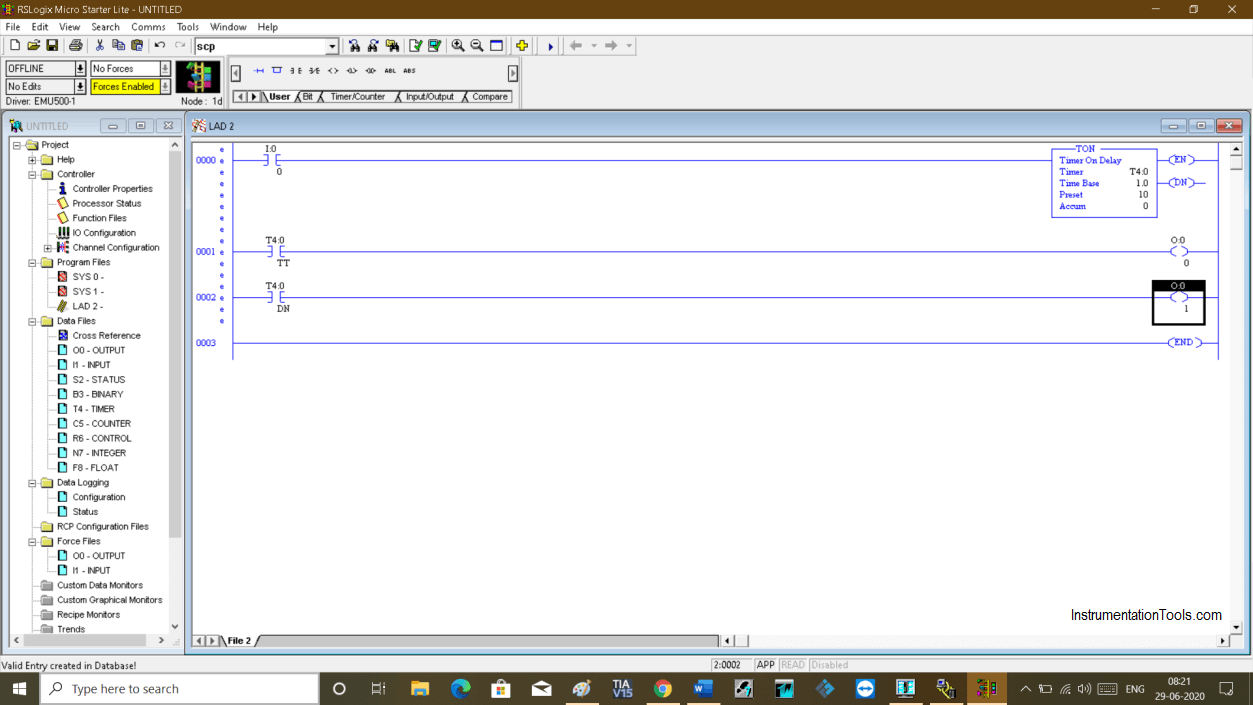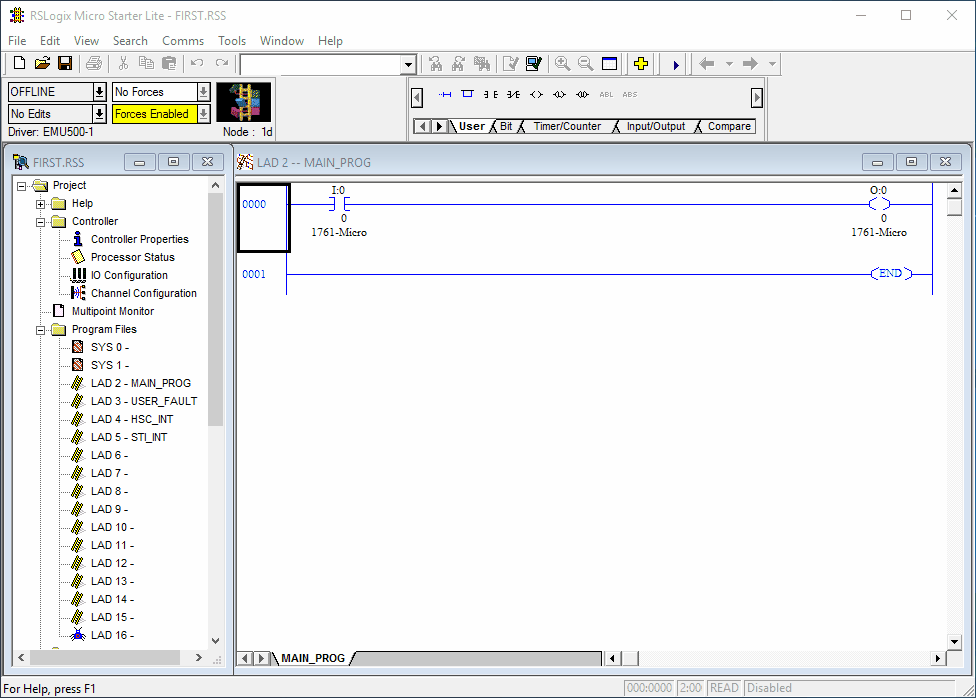

- #RSLOGIX 500 EMULATOR TROUBLESHOOTING GUIDE HOW TO#
- #RSLOGIX 500 EMULATOR TROUBLESHOOTING GUIDE CODE#
- #RSLOGIX 500 EMULATOR TROUBLESHOOTING GUIDE PROFESSIONAL#
However, since the value is still over the allowed range, the PLC will fault out immediately upon setting it into “Run”. The fault reset is issued without a problem since the fault is considered minor. This process is different from RSLogix and Studio 5000 in which the user defines every tag instead.Īt this point, you may try to clear the fault and put the PLC back into “Run” mode. RSLogix 500 allows the user to define the data types which will be used within the program.

Create a post with as many details as possible on the following forum: SolisPLC Forums RSLogix 500 Mathematical Overflow Fault Troubleshooting As mentioned above, it’s highly unlikely that you’ve encountered an issue that has never been seen before. If you’re still stuck, it’s advised to post your fault with as many details as possible on an end-user community forum. If you’ve purchased equipment from a local distributor, they may be of assistance as well. If this isn’t available to you, it’s often possible to obtain help from a local system integration company. You’ll be connected with an expert from the company who should be able to guide you toward a resolution of the problem. If you have access to paid channels such as Rockwell Tech Connect, it’s time to make a phone call.
#RSLOGIX 500 EMULATOR TROUBLESHOOTING GUIDE PROFESSIONAL#
If none of the above methods worked, it’s time to reach out for professional help. Do not disregard user-generated content as end-users may often encounter faults that aren’t always known by the OEMs.
#RSLOGIX 500 EMULATOR TROUBLESHOOTING GUIDE CODE#
Other times, the fault code along with an extensive troubleshooting guide will be available from an OEM document such as a datasheet. Note that some of these resources could be from a forum, blog post or another user-created resource. The top results within the search engine are very good at resolving the fault of our experience. Chances are, someone has already encountered the same fault you’re seeing. This description will aid in the following steps of the process and may give the programmer a good idea of what the problem is.įault codes may be typed directly into Google.

Once the menu is opened, it’s important to take note of the fault. In RSLogix 500, this description may be accessed through the fault menu in the top left corner. Step 2 – Using the Error Description FunctionalityĮvery Programmable Logic Controller that throws a fault will present the user with a certain description. An intermittent fault may have been caused by a deadlock in the software, an electrical malfunction or a glimpse in the system. Therefore, unless a potential problem of doing so is apparent, the first step is often to reset the PLC and set it back to “Run”.

It’s important to note that in production, every minute of downtime is expensive. That being said, what is an effective starting process? Which steps would we typically take? By practicing this skill, the individual will take less time on future problems they encounter.
#RSLOGIX 500 EMULATOR TROUBLESHOOTING GUIDE HOW TO#
By going through the steps, again and again, an experienced electrician, technician or engineer, will develop an eye for how to fix most problems. The ability to effectively troubleshoot control systems comes from practice. RSLogix 500 MicroLogix 1100 Fault Finding Program The General Approach to PLC Fault Troubleshooting Note that you may choose to run this on an emulator or an actual PLC. If you wish to donwload the program and try the troubleshooting steps on your own, here’s the link to the RSLogix 500 file. The goal of the tutorial is to illustrate simple, yet effective, troubleshooting steps you can apply to most errors. In this tutorial, we will be going over a common error which we’ve observed in systems that run on RSLogix 500. Knowing how to navigate common issues on legacy systems running RSLogix 500 could save you and your plant precious hours of downtime. Troubleshooting a fault on a production PLC system is often stressful and ambiguous.


 0 kommentar(er)
0 kommentar(er)
